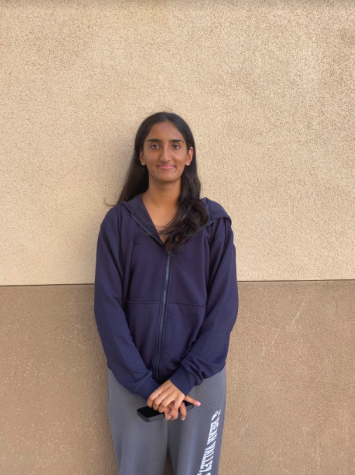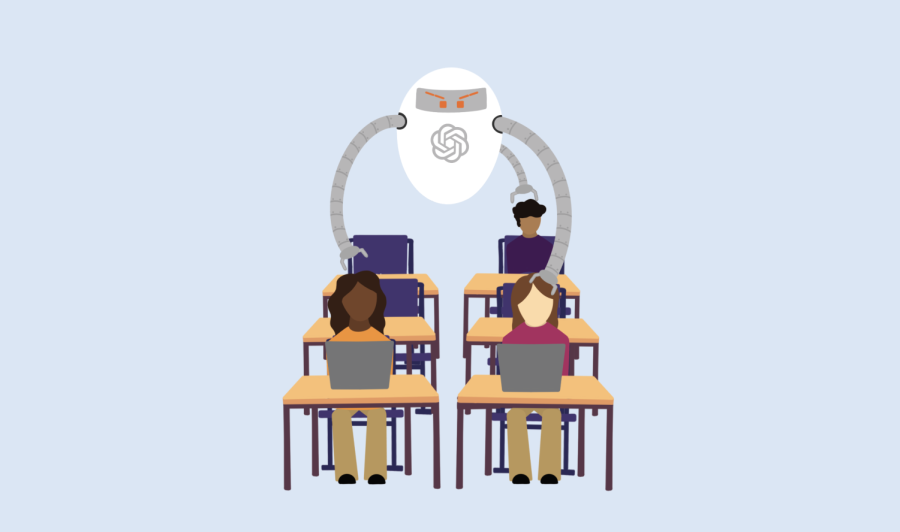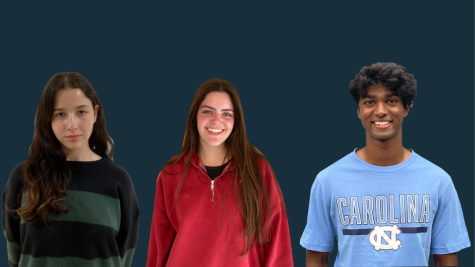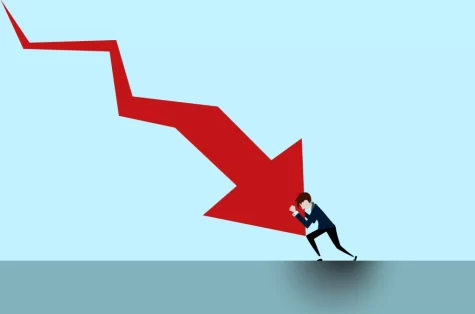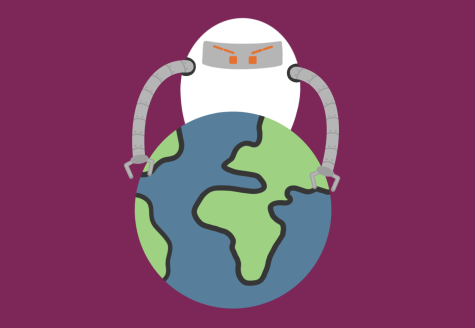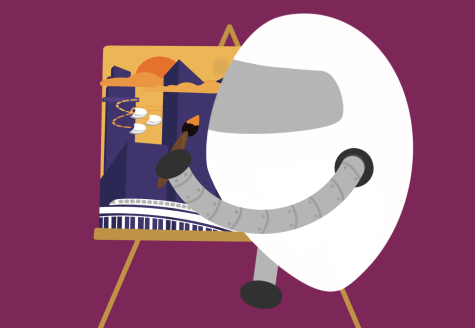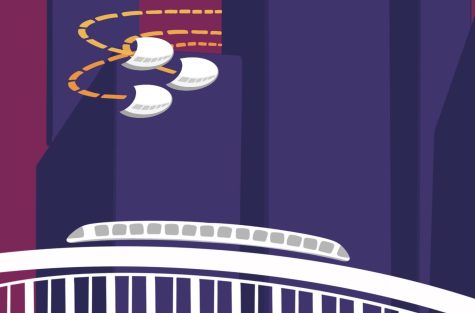ChatGPT to change how education looks
With the rapid advancement of Artificial Intelligence, it is unclear what impact it will have on education.
Generative Pretrained Transformer 3, a chatbot created by OpenAI, has sparked national conversations regarding the potential use of AI by students. ChatGPT-3 is the newest iteration of the AI text generation software. The chatbot has the ability to respond to prompts in a variety of styles, potentially allowing students to use the AI on various assignments ranging from discussion posts, essays and research papers. FHS is already seeing instances of student’s using the program for schoolwork.
“Some kids copy-and-pasted chunks and then put it into their essay,” FHS history teacher David Rognas said. “Then, other kids [had places] where the writing was a little elevated because they would paraphrase [from the AI], or it was similar to what they had seen in the AI but then they added in some more stuff themselves.”
AI created work being submitted for assignments, goes against the academic integrity policy for FHS which states that “Attempting to misrepresent the authorship of student work, i.e., having someone else write a paper” is not allowed. Misrepresenting authorship applies to submitting AI-created writing for an assignment. To combat student use of the AI, some teachers are moving to administer more in-class writing assignments.
“I’m assigning more of the reading for homework and we’re doing more writing in class,” FHS English teacher David Bigelman said. “It’s just a shift in [the] focus areas for home and in class, but it doesn’t change any of the material that we’re covering. [Teachers should] just reapportion what’s happening at home and in school.”
ChatGPT differs from its previous counterparts in one critical way: the program is able to write objectively well. One of the main reasons for its large traction in the media is due to its ability to write coherent essays on virtually any topic within seconds. ChatGPT relies on Reinforcement Learning from Human Feedback, a technique that involves the input of human feedback to finetune the AI’s outputs.
“I felt like [ChatGPT] put together a pretty good essay compared to an average high school student,” Rognas said.
The improved quality of AI generated text means that the shift towards online assignments which was accelerated by COVID-19 might need reconsideration. The FHS administration has blocked ChatGPT and OpenAI through the Securly web filter on all school-owned Chromebooks, but AI software can be accessed on assignments that students take home, or do on their own devices at school. In-class essays written on paper make it impossible for students to copy and paste AI-generated responses, and are already the standard in classes like AP United States History and AP English classes. Teachers currently use programs such as Turnitin.com to check student work for plagiarism. However, these are unable to check for AI-created work because the text has never been created previously.
“Teachers need to give assessments and assignments that accurately assess the student’s skills and knowledge level that we know hasn’t been done by some outside entity,” Bigelman said. “Now, the issue is that outside entities are so much more accessible, but that means—to me—we just do more in class.”
Open AI, the company behind ChatGPT, is an independent AI research and deployment company based in San Francisco since its founding in 2015. Among the founders are current company CEO, Sam Altman, as well as Elon Musk, who no longer possesses any company shares. OpenAI has produced a number of other notable engines including Dall-E, a text to image generator, and Codex, a translator of natural language to code.
“Generative text is something we all need to adapt to,” Altman said as reported by the Guardian. “We adapted to calculators and changed what we tested for in math class, I imagine. This is a more extreme version of that, no doubt, but also the benefits of it are more extreme, as well.”
Some teachers at FHS think that ChatGPT is not only a program to adapt to, but a tool that can support students in their work. For instance, ChatGPT can act as a tutor for certain assignments that require a student’s comprehension of a text in order to analyze it. If a student is assigned a text and is asked to understand it, after working through it on their own, they could use ChatGPT.
“Now, there’s no reason for students to say, ‘Well, I just didn’t understand this paragraph in the reading,’” Bigelman said. “Well, you could have asked ChatGPT. So, when [I give students a] page which I expect [them] to understand it and [they] read it but don’t bother to figure out the parts that [they] didn’t understand. Well, maybe it was difficult, but now [they] have something you can ask. So, now, there really isn’t a reason for [the students] to not be able to explain it.”
Students who have used ChatGPT find that it is a better alternative to Google and other search engines for certain schoolwork.
“[ChatGPT is] really helpful,” an Anonymous FHS senior said. “It’s like Google, but actually gives you the most up to date and in-depth answer. When you search something in Google, there’s very different sources to find an answer, but ChatGPT gives you the best source and the best answer.”
However, much like other forms of academic dishonesty, using ChatGPT as a crutch for schoolwork can deprive students of necessary skills and learning.
“It’s the process of [struggling] to figure things out that makes [students] smarter, it’s not getting the answer,” Bigelman said. “So, they’re robbing themselves of getting smarter or improving their actual literacy skills, speaking skills [or] whatever they’re working on. [Those using ChatGPT are] not improving or are improving minimally compared to the students that are going through the struggle. Because it’s the struggle that makes them better.”
Some developments to help identify AI use in student work have already begun appearing. Edward Tian, a computer science major at Princeton University, created GPTZero, an app aimed at educators that can detect AI generated text. GPTZero examines two key factors in a student’s work: perplexity, a measure of randomness, and burstiness, which refers to the variance within the writing. Generally, human-written texts have a tendency to be more random and consist of more variance than bot-generated text. GPTZero currently only exists as a textbox, but the full version which is in development would allow teachers to upload documents for evaluation just like Turnitin.com.
Even with AI detection software some students are still able to get around it. In fact, some even use the software themselves to ensure that their submitted work does not stand out, making AI use harder to detect by teachers.
“I try my best to not make it obvious that [my assignments are written by] an AI bot,” an Anonymous FHS senior said. “I dumb it down a little bit and change words up. And there’s also AI detectors for GPT. So, I [run] it through that and there’s a scale on the AI detector between 100%, fake [and] 100% real and I try to get 100% Real or at least 95%.”
School districts across the U.S., including Seattle Public Schools and New York City’s Department of Education, have administered bans on ChatGPT on school devices.
Educators have expressed concerns regarding how ChatGPT threatens students’ learning and progress.
“There’s two real main things like content and skills,” Rognas said. “I want [students] to leave history class and have a way better understanding of history. That’s important. But, maybe, what’s more important is that [their] skills grow […] Critical thinking and writing are really applicable to [their] real world experience, maybe a little bit more than understanding the difference between the early colonies in AP U.S. History.”
Rumors of OpenAI’s ChatGPT-4, scheduled to be released in 2023, have begun circulating. ChatGPT-4 is estimated to reach 1 trillion parameters or more, while ChatGPT-3 has 174 billion, making it able to produce at a faster and more accurate capability.
“We’re going to try and do some things in the short term,” Altman said as reported by the Guardian. “There may be ways we can help teachers be a little more likely to detect output of a GPT-like system. But honestly, a determined person will get around them.”
